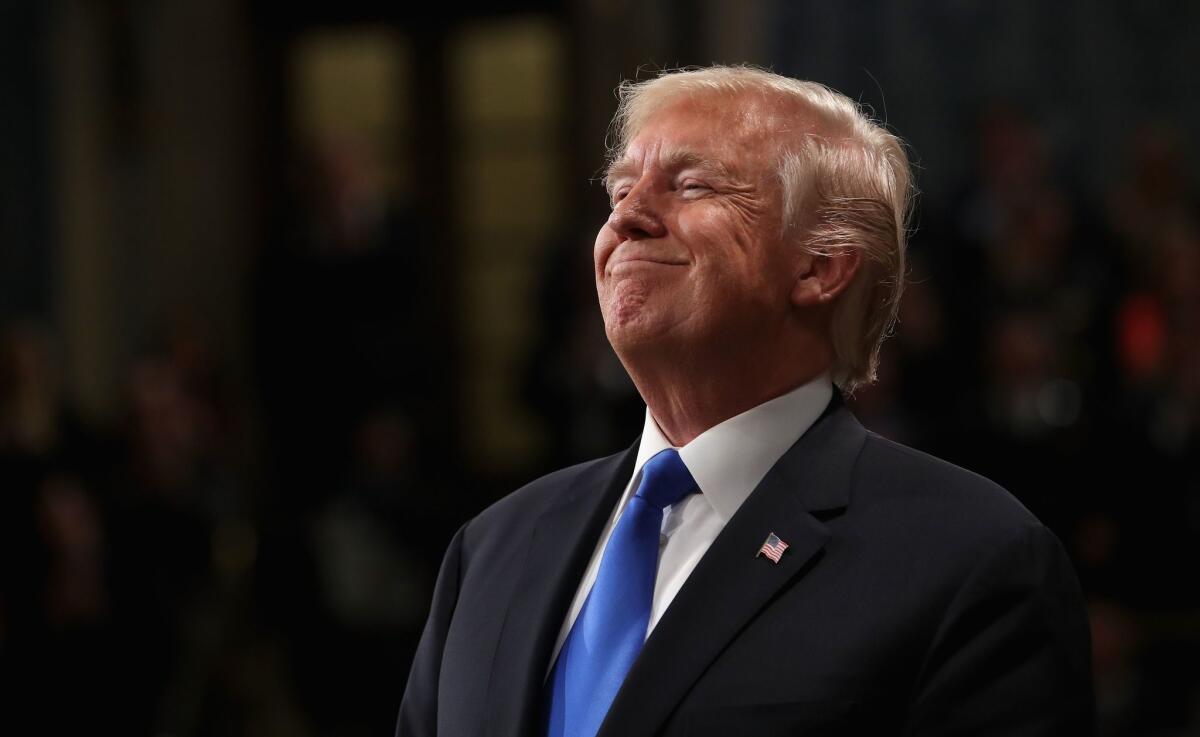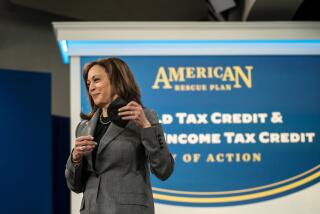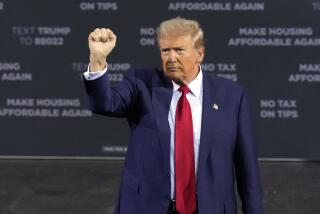Column: Trickle-down theory is a monstrous lie intended to justify the rich getting richer

- Share via
One of the biggest lies foisted on the American people is that as rich people get richer, we all benefit — the so-called trickle-down theory.
For decades, working families have been told not to worry about the growing wealth gap between the nation’s haves and have-nots. A rising tide lifts all boats, we’ve been told with encouraging smiles and pats on the back.
The magnitude of the deception borders on monstrous.
William Darity, a professor of public policy at Duke University, said it’s “nonsensical” to think that greater wealth for the rich translates to improved fortunes for everyone else.
“Otherwise we would not have observed such an obscene increase in the degree of income inequality that has restored the magnitude of levels that existed on the eve of the Great Depression,” he told me.
“I have not seen anyone make a serious claim for a trickle-down effect with respect to wealth.”
Put simply, there is no empirical evidence — none whatsoever — that trickle-down economics delivers as promised, bringing more jobs, higher pay and better conditions to millions of people.
The reality is that as the rich get richer, the rich get richer, full stop. They buy more houses and cars and boats and stuff.
Yes, that has a positive impact on makers of luxury goods. But it’s not in any way the shared prosperity implicit in the trickle-down pledge.
The latest indicator that things are terribly out of whack came in a report last week from the Economic Policy Institute, which found that compensation for American chief executives increased by 940% from 1978 to 2018, while pay for the average worker rose by a miserable 12% over the same 40-year period.
Average pay for CEOs of the 350 biggest U.S. companies hit $17.2 million last year, the researchers found.
Put another way, compensation for CEOs is now 278 times greater than for ordinary workers. That’s a stratospherically larger income gap than the 20-to-1 ratio in 1965.
“This escalation of CEO compensation, and of executive compensation more generally, has fueled the growth of top 1% and top 0.1% incomes, leaving less of the fruits of economic growth for ordinary workers and widening the gap between very high earners and the bottom 90%,” the report concluded.
Much of the blame for the trickle-down lie goes to conservative economist Arthur Laffer, godfather of “supply-side” economics, a.k.a. “Reaganomics.” He argued, using an easy-to-understand graph — the Laffer curve — that as tax rates go down, government revenue goes up.
This, of course, is magical thinking. Yet it has served as the intellectual basis of virtually all Republican economic policies since the 1970s, and was the primary justification for the party’s most recent tax cuts for wealthy corporations and individuals.
On Sunday, President Trump dismissed growing speculation about a recession by insisting his tax cuts, and the miracle of trickle-down prosperity, will keep the economy humming.
“Consumers are rich,” he said. “I gave a tremendous tax cut and they’re loaded up with money.”
In fact, consumer sentiment fell this month to the lowest level of the year.
As for the tax cuts, the Treasury Department reported last week that the U.S. budget deficit soared by 27% to $867 billion over the first 10 months of the fiscal year.
That was due in no small part to Trump’s tax cuts doing not what Laffer predicted but what all sensible economists said would happen: Government revenue fell while spending increased.
The deficit is projected to top $1 trillion for the entire fiscal year, which ends Sept. 30. The last time that happened was in the aftermath of the Great Recession.
On a smaller level, Republicans turned the state of Kansas into a laboratory for trickle-down economics, with the goal being to prove conclusively that if you aggressively cut taxes, the economy will rev like a mighty engine.
What happened, needless to say, is that revenue shrank, the state’s bond rating plummeted, and draconian cuts were made to schools and infrastructure. The Republican-controlled state Legislature finally rolled back the tax cuts in 2017 and started scrounging to close a $900-million budget shortfall.
“A healthy economy depends on a functioning government,” said Owen Zidar, an associate professor of economics and public affairs at Princeton University.
“Not being able to finance a quality education system and other priorities can lead to lower economic performance when tax revenues are too low,” he said. “At current tax rates, there’s no credible evidence that tax cuts pay for themselves.”
Economists say the wealth gap in American society is now the greatest since the Gilded Age of the late 19th century, when the richest 10% owned roughly three-quarters of the nation’s wealth, and the bottom 40% had virtually nothing.
It’s currently estimated that the richest 200,000 families own about as much as the bottom 90% of households combined.
How do you fix that? Conservatives wouldsay you should cut taxes so you’d get more money into the hands of more people.
White House economic advisor Larry Kudlow told Fox News on Sunday this is precisely what the Trump administration is considering.
“Let’s let people keep more of what they earn,” he said. “That’s the supply side of the Laffer curve. We believe in that.”
Belief is required because there’s no evidence to support the idea.
What the evidence does show is that large-scale tax cuts lead to more debt, deficits, budget cuts and economic uncertainty as a greater share of financial resources is devoted to paying off interest on loans from our trading partners.
UC Berkeley’s Haas Institute for a Fair and Inclusive Society has some smarter suggestions:
- Raise the minimum wage, which could help nearly 4.6 million people out of poverty.
- Expand the earned income tax credit, which could lift roughly 4.7 million children above the poverty line.
- Make the tax code more progressive, which is to say, have the tax burden fall more heavily on those who can afford it, particularly through a higher levy on capital gains.
That last proposal regarding progressivity is the most important. As the rich have accumulated a greater share of the nation’s wealth, they’ve simultaneously succeeded in lowering their tax obligations.
From 1940 to 1980, the tax rate for the super-rich never dropped below 70%. For much of the 1950s, it was above 90% — although, like today, most rich people used a variety of techniques to lower their tax bills, such as tax shelters and offshore accounts.
The top tax rate is now 37%. However, few if any billionaires pay even that much.
For example, Trump, while enjoying the life of a jet-setting businessman, claimed $1.17 billion in losses from 1985 to 1994, which allowed him to skip income taxes for eight of those 10 years, according to IRS tax transcripts obtained by the New York Times.
In June, Trump awarded trickle-down proponent Laffer the Presidential Medal of Freedom, the nation’s highest civilian honor.
Trump praised Laffer’s “brilliant theory,” and said the value of trickle-down economics had been proved “over and over again.”
It hasn’t. Just the opposite.
Over and over again.
More to Read
Inside the business of entertainment
The Wide Shot brings you news, analysis and insights on everything from streaming wars to production — and what it all means for the future.
You may occasionally receive promotional content from the Los Angeles Times.











